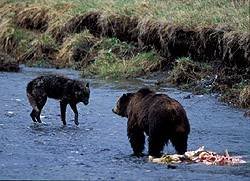4. THE BOTTOM LINE: SIX ASSERTIONS. Read the entire report.
Gen Barry McCaffery (ret) is currently serving as adjunct Professor of International Relations at West Point. He has previously issued overviews of the war in Iraq at various critical junctures that proved to be highly accurate. He has now visited Afghanistan and issued a report on the situation in that country, including therein his assessment that the next year will be the most critical period of this war.
__________________________________________________________
This from Gen. McCaffery:
Afghanistan is in misery. 68% of the population has never known peace. Life expectancy is 44 years. It has the second highest maternal mortality rate in the world: One of six pregnant Afghan women dies for each live birth. Terrorist incidents and main force insurgent violence is rising (34% increase this year in kinetic events.) Battle action and casualties are now much higher in Afghanistan for US forces than they are in Iraq. The Afghan government at provincial and district level is largely dysfunctional and corrupt. The security situation (2.8 million refugees); the economy (unemployment 40% and rising, extreme poverty 41%, acute food shortages, inflation 12% and rising, agriculture broken); the giant heroin/opium criminal enterprise ($4 billion and 800 metric tons of heroin); and Afghan governance are all likely to get worse in the coming 24 months.
The magnificent, resilient Afghan people absolutely reject the ideology and violence of the Taliban (90% or greater) but have little faith in the ability of the government to provide security, justice, clean water, electricity, or jobs. Much of Afghanistan has great faith in US military forces, but enormous suspicion of the commitment and staying power of our NATO allies.
The courageous and determined NATO Forces (the employable forces are principally US, Canadian, British, Polish, and Dutch) and the Afghan National Army (the ANA is a splendid success story) cannot be defeated in battle. They will continue to slaughter the Pashtun insurgents, criminals, and international terrorist syndicates who directly confront them. (7000+ killed during 2007 alone.) The Taliban will increasingly turn to terrorism directed against the people and the Afghan National Police. However, the atmosphere of terror cannot be countered by relying mainly on military means. We cannot win through a war of attrition. The economic and political support provided by the international community is currently inadequate to deal with the situation.
2009 will be the year of decision. The Taliban and a greatly enhanced foreign fighter presence will: strike decisive blows against selected NATO units; will try to erase the FATA and Baluchi borders with Afghanistan; will try to sever the road networks and stop the construction of new roads (Route # 1 -- the Ring Road from Kabul to Kandahar is frequently now interdicted); and will try to strangle and isolate the capital. Without more effective and non-corrupt Afghan political leadership at province and district level, Afghanistan may become a failed state hosting foreign terrorist communities with global ambitions. Afghan political elites are focused more on the struggle for power than governance.
US unilateral reinforcements driven by US Defense Secretary Bob Gates have provided additional Army and Marine combat forces and significant enhanced training and equipment support for Afghan security forces. This has combined with greatly increased US nation-building support (PRT’s, road building, support for the Pakistani
Armed Forces, etc.) to temporarily halt the slide into total warfare. The total US outlay in Afghanistan this year will be in excess of $34 billion: a burn rate of more than $2.8 billion per month. However, there has been no corresponding significant effort by the international community. The skillful employment of US Air Force, Army, and Naval air power (to include greatly expanded use of armed and reconnaissance UAV’s : Predator, Reaper, Global hawk, and Shadow) has narrowly prevented the Taliban from massing and achieving local tactical victories over isolated and outnumbered US and coalition forces in the East and South.
There is no unity of command in Afghanistan. A sensible coordination of all political and military elements of the Afghan theater of operations does not exist. There is no single military headquarters tactically commanding all US forces. All NATO military forces do not fully respond to the NATO ISAF Commander because of extensive national operational restrictions and caveats. In theory, NATO ISAF Forces respond to the (US) SACEUR…but US Forces in ISAF (half the total ISAF forces are US) respond to the US CENTCOM commander. However, US Special Operations Forces respond to US SOCOM…..not (US) SACEUR or US CENTCOM. There is no accepted Combined NATO-Afghan military headquarters. There is no clear political governance relationship
organizing the government of Afghanistan, the United Nations and its many Agencies, NATO and its political and military presence, the 26 Afghan deployed allied nations, the hundreds of NGO’s, and private entities and contractors. There is little formal dialog between the government and military of Pakistan and Afghanistan, except that cobbled together by the US Forces in Regional Command East along the Pakistan frontier.
5. THE BOW WAVE OF THE US PRESIDENTIAL CAMPAIGN:
Afghanistan has become the good war and Iraq the war with issues. Neither characterization is relevant. Both candidates to be the US Commander-in-Chief have been placed in awkward stances by the political dynamics of the debate. They have been perhaps unfairly caricatured by sound bites of who will send the most reinforcing US Army combat brigades to Afghanistan. Afghanistan will not be solved by the addition of two or three more US combat brigades . . .
. . . The battle will be won in Afghanistan when there is an operational Afghan police presence in the nation’s 34 provinces and 398 Districts. The battle will be won when the current Afghan National Army expands from 80,000 troops to 200,000
troops with appropriate equipment, training, and leadership and embedded NATO LNO teams. (Afghanistan is 50% larger than Iraq and has a larger population.) The battle will be won when we deploy a five battalion US Army engineer brigade
with attached Stryker security elements to lead a five year road building effort employing Afghan contractors and training and mentoring Afghan engineers. The war will be won when we fix the Afghan agricultural system which employs 82% of the population. The war will be won when the international community demands the eradication of the opium and cannabis crops and robustly supports the development of alternative economic activity.
6. NATO:
Without NATO we are lost in Afghanistan. The next Administration must have a major diplomatic commitment to strengthen the capabilities and commitment of our 26 NATO allies. . . .
Current non-US NATO forces deployed in Afghanistan are in many cases woefully inadequate for the task they face. They have serious restrictive caveats to their military employment. They are casualty adverse in a very dangerous and brutal environment. They are in many cases lacking the force enablers that are a prerequisite to effective COIN operations. (Helicopter and UAV support, intelligence, logistics, engineers, civil affairs and special operations units, precision artillery munitions, trauma medical support, cash for nation-building economic activity, etc.) Some are badly trained and equipped. The Germans as an example have an enormously professional military with superb officers but make a marginal contribution in Afghanistan because of the crippling political restrictions on their employment.
The US has until recently sadly neglected to adequately nurture, shape, and sustain the capabilities of NATO to deal with the new realities of the post-Cold War security environment. This is a challenge to the NATO political leadership of all 26 nations. NATO is a political alliance not a military headquarters.
7. PAKISTAN:
Pakistan is a state of four separate nations under a weak federal government. The Pakistani military is the central loadbearing institution of the state. It is the most respected institution in Pakistan. The Army has severe military limitations in its ability to control the FATA and Baluchistan frontier areas.
A major US intervention across the Pakistan border to conduct spoiling attacks on Pashtun and criminal syndicate base areas would be a political disaster. We will imperil the Pakistani government’s ability to support our campaign. They may well stop our air and ground logistics access across Pakistan and place our entire NATO presence in severe jeopardy.
This is a 25 year campaign. We must be patient in our expectations. We must do no harm dealing with Pakistan. We clearly can strike directly and covertly across the border in self-defense. We must never publicly put the Pakistani military in political peril with their own people.
8. AFGHANISTAN: A NARCO-STATE.
The Taliban, Al Qaeda, war lords, and Afghan criminal enterprises are principally funded by what some estimate as $800 million dollars a year derived from the huge $4 billion annual illegal production and export of opium/heroin and cannabis.
Production of both opium and cannabis has surged throughout the country. (Opium up from 198,000 acres in 2003 to 476,900 by 2007.) This criminal enterprise employs 3.3 million workers, addicts the population (perhaps 900,000 drug users), distorts the economy, and corrupts justice and government.
The international community to include the United States has provided small sums to develop alternative economic livelihood aid. ($111 million in 2007 and only $655 million since 2002). The US has a handful of courageous DEA agents in Afghanistan joining a symbolic and largely ineffective international counter-drug program.
The international community has been fearful of confronting this issue. Unless we deal head-on with this enormous cancer, we should have little expectation that our efforts in Afghanistan will not eventually come to ruin.
. . . .
11. SUMMARY:
We cannot allow ourselves to fail in Afghanistan.
NATO is central to achieving our purpose.
This is a generational war to build an Afghan state and prevent the creation of a lawless, extremist region which will host and sustain enduring threats to the vital national security interests of the United States and our key allies.
Wednesday, August 6, 2008
General Barry McCaffery's Report On Afghanistan - "2009 Will Be The Year of Decision"
Posted by
GW
at
Wednesday, August 06, 2008
0
comments
![]()
Labels: Afghanistan, corruption, McCaffery, narco-state, NATO, opium, unity of command
Tuesday, January 15, 2008
A Short Primer on NATO's War In Afghanistan
 Afghanistan is more and more in the news with the regrowth of the Taliban and al Qaeda from their safe havens in Pakistan, the shadow the conflict has thrown over NATO, and the increasing tempo of military operations in the country.
Afghanistan is more and more in the news with the regrowth of the Taliban and al Qaeda from their safe havens in Pakistan, the shadow the conflict has thrown over NATO, and the increasing tempo of military operations in the country.From the CIA Factbook, Afghanistan is a country of 31 million people settled across a land locked country that is just slightly smaller than the state of Texas. The life expectancy of a person born today in Afghanistan is about 43 years, and the literacy rate among males is about 43%. The birthrate is an incredibly high 6.64 children per woman. The per capita GDP is approximately $800 per person with a growth rate of 8%. The largest cash crop in Afghanistan is opium. The country is mostly Sunni Muslim with Shi'a Muslim and other accounting for 20% of the population.
Politically, the country is dividied into twelve provinces:

Ethnically, Afghanistan is a mix of Pashtun 42%, Tajik 27%, Hazara 9%, Uzbek 9%, Aimak 4%, Turkmen 3%, Baloch 2%, other 4%. The geographic distribution of these ethnicities is show on the map below.

Currently, US and NATO forces in Afghanistan number approximately 54,000 soldiers. You can find the order of battle for 2007 here. According to Bill Rogio at the Long War Journal:
During 2007, Afghanistan experienced its most violent year since the overthrow of the Taliban regime in early 2002. Suicide attacks, improvised explosive devices, or IEDs, and small-arms attacks reached new heights in 2007. The Taliban, with its sanctuaries in the Northwestern Frontier Province and Baluchistan in Pakistan, have stepped up attacks against the Afghan military and the International Security Assistance Force in an attempt to destabilize the Afghan government and force the Western governments to withdraw.
The southern, southeastern, and eastern regions, all which border Pakistan, experience 73 percent of the Taliban-inspired violence in Afghanistan. Kunar, Kandahar, Khost, Nangarhar, and Paktia provinces, all of which border Pakistan, experience the most Taliban-driven attacks in Afghanistan. Kunar, which borders Pakistan's Bajaur province, an al Qaeda command-and-control hub, is Afghanistan's most dangerous province.


Read the entire post here. The increasing violence in Afghanistan coupled with less than enthusiastic support from several of our NATO allies has caused increasing friction. This from the Council of Foreign Relations a month ago:
. . . U.S. Defense Secretary Robert M. Gates, frustrated by an inability to secure additional helicopters and soldiers, lashed out at member nations ahead of meetings in Scotland on December 15. Britain’s top defense official, Des Browne, also has called on the North Atlantic Treaty Organization (NATO) “to share the burden” (BBC) in rebuilding. Those allies on the receiving end of such messages—including Germany, which supplies the third-largest contingent of forces to the effort but refuses to conduct major combat missions—responded coolly (Spiegel Online). The criticism will be “taken seriously,” a spokesman for the German interior ministry said, “but is not entirely new.”
Bickering between capitals underscores the challenges facing the Afghanistan mission six years after U.S.-led forces invaded. Suicide attacks are on the rise (PDF), aid workers are increasingly targeted (Times of London), and the Taliban has surfaced in once-peaceful regions. U.S. and British pleas for multilateral assistance also say much about the health of NATO itself—and the price of failure for the strategic alliance forged in the early days of the Cold War. Until this year’s Taliban resurgence tied up NATO forces, particularly from Canada, Britain, and the Netherlands, the alliance had focused largely on development and reconstruction. There are 41,700 troops from thirty-nine countries in the International Security Assistance Force (PDF), including fifteen thousand Americans. But the United States also has an additional twelve thousand non-NATO soldiers who conduct counterinsurgency missions. The two forces don’t always coordinate.
. . . Julianne Smith of the Center for Strategic and International Studies blames the United States and its partners for neglecting broader regional issues (PDF) such as the deepening unrest in neighboring Pakistan. She says an inability to stem the influx from Pakistan’s tribal areas, home to training camps for al-Qaeda and the Taliban, has prompted some NATO partners to “lose confidence” in the mission.
Revamping the alliance’s role has therefore become a key concern for Washington and Brussels. The Bush administration, under pressure (WashPost) to shift resources from Iraq where violence levels are declining, is said to be considering an increase in troops to Afghanistan. The top NATO commander in Afghanistan supports the increase. A series of strategy reevaluations (NYT) are also planned to bolster counterinsurgency and development efforts. On December 20 President Bush said his “biggest concern” would be for NATO countries to withdraw troops prematurely. Meanwhile, the United States and Britain are seeking to install a “super envoy” (Reuters) to coordinate international efforts and some alliance members are considering an extension of their mission.
Washington can use the help; the Bush administration’s ability to foster NATO success in Afghanistan is seen as vital to the alliance’s future (PDF), and to that of the region. Chaos in Afghanistan could embolden regional actors, including Iran (thought to be supporting the Taliban), and militants in Pakistan. Yet a renewed and vibrant NATO alliance is far from guaranteed. CFR President Richard N. Haass, writing in the Financial Times, argues Europe’s “capacity for global intervention is diminishing, especially in the military field.” . . .
Read the entire article. And there is this today from the Washington Post:
The U.S. plan to send an additional 3,200 Marines to troubled southern Afghanistan this spring reflects the Pentagon's belief that if it can't bully its recalcitrant NATO allies into sending more troops to the Afghan front, perhaps it can shame them into doing so, U.S. officials said.
But the immediate reaction to the proposed deployment from NATO partners fighting alongside U.S. forces was that it was about time the United States stepped up its own effort.
After more than six years of coalition warfare in Afghanistan, NATO is a bundle of frayed nerves and tension over nearly every aspect of the conflict, including troop levels and missions, reconstruction, anti-narcotics efforts, and even counterinsurgency strategy. Stress has grown along with casualties, domestic pressures and a sense that the war is not improving, according to a wide range of senior U.S. and NATO-member officials who agreed to discuss sensitive alliance issues on the condition of anonymity.
While Washington has long called for allies to send more forces, NATO countries involved in some of the fiercest fighting have complained that they are suffering the heaviest losses. The United States supplies about half of the 54,000 foreign troops in Afghanistan, they say, but the British, Canadians and Dutch are engaged in regular combat in the volatile south.
"We have one-tenth of the troops and we do more fighting than you do," a Canadian official said of his country's 2,500 troops in Kandahar province. "So do the Dutch." The Canadian death rate, proportional to the overall size of its force, is higher than that of U.S. troops in Afghanistan or Iraq, a Canadian government analysis concluded last year.
British officials note that the eastern region, where most U.S. forces are based, is far quieter than the Taliban-saturated center of British operations in Helmand, the country's top opium-producing province. The American rejoinder, spoken only in private with references to British operations in both Iraq and Afghanistan, is that superior U.S. skills have made it so.
NATO has long been divided between those with fighting forces in Afghanistan and those who have restricted their involvement to noncombat activities. Now, as the United States begins a slow drawdown from Iraq, the attention of even combat partners has turned toward whether more U.S. troops will be free to fight in the "forgotten" war in Afghanistan.
When Canadian Foreign Minister Maxime Bernier visited Washington late last month, he reminded Secretary of State Condoleezza Rice that Canada's Afghan mandate expires in January 2009. With most of the Canadian public opposed to a continued combat role, he said, it is not certain that Ottawa can sustain it.
Bernier's message was that his minority government could make a better case at home if the United States would boost its own efforts in Afghanistan, according to Canadian and U.S. officials familiar with the conversation.
"I don't think he expected an express commitment that day that they would draw down in Iraq and buttress in Afghanistan," the Canadian official said. "But he certainly registered Canadian interest and that of the allies involved."
According to opinion polls, Canadians feel they have done their bit in Afghanistan. Prime Minister Stephen Harper last fall named an independent commission to study options -- continuing the combat mission, redeploying to more peaceful regions, or withdrawing in January 2009. The commission report, due this month, will form the basis of an upcoming parliamentary debate.
With a Taliban offensive expected in the spring, along with another record opium poppy crop, the new Marines will deploy to the British area in Helmand and will be available to augment Canadian forces in neighboring Kandahar.
Both President Bush and Defense Secretary Robert M. Gates have toned down their public pressure on allies. When German Chancellor Angela Merkel visited Bush at his Texas ranch in November, U.S. and German officials said, she told him that while Bonn would step up its contribution in quiet northern Afghanistan, any change in Germany's noncombat role would spell political disaster for her conservative government.
"It's not an excuse; it's simply reality -- coalition reality and domestic reality," a German official said. Merkel came away with Bush's pledge to praise Germany's efforts and stop criticizing.
Although Gates began a meeting of NATO defense ministers late last year by saying he would not let them "off the hook" for their responsibilities in Afghanistan, he said in a news conference at the end of the session that further public criticism was not productive.
Still, the Defense Department hopes that increasing its own contribution -- nearly half of an additional 7,500 troops Gates has said are needed in Afghanistan -- will encourage the allies. "As we're considering digging even deeper to make up for the shortfall in Afghanistan," Pentagon spokesman Geoff Morrell said, "we would expect our allies in the fight to do the same."
Many Europeans believe that the United States committed attention and resources to Iraq at Afghanistan's expense. But U.S. officials say the problems of NATO countries in Afghanistan have roots in not investing sufficiently in their militaries after the Cold War. Canada, U.S. officials say, needs American military airlift for its troops in Afghanistan because it got rid of a fleet of heavy lift helicopters.
At the same time that they want more from their partners, however, U.S. defense officials often disdain their abilities. No one, they insist, is as good at counterinsurgency as the U.S. military.
U.S. and British forces have long derided each other's counterinsurgency tactics. In Iraq, British commanders touted their successful "hearts and minds" efforts in Northern Ireland, tried to replicate them in southern Iraq, and criticized more heavy-handed U.S. operations in the north. Their U.S. counterparts say they are tired of hearing about Northern Ireland and point out that British troops largely did not quell sectarian violence in the south.
The same tensions have emerged in Afghanistan, where U.S. officials criticized what one called a "colonial" attitude that kept the British from retaining control over areas wrested from the Taliban. Disagreement leaked out publicly early last year when British troops withdrew from the Musa Qala district of Helmand after striking a deal with local tribal leaders. The tribal chiefs quickly relinquished control to the Taliban.
Britain, with a higher percentage of its forces deployed worldwide than the United States, is stretched thin in Afghanistan. Not only did the British have insufficient force strength to hold conquered territory, but the reconstruction and development assistance that was supposed to consolidate military gains did not arrive.
"It's worth reminding the Americans that the entire British army is smaller than the U.S. Marine Corps," said one sympathetic former U.S. commander in Afghanistan.
After 10 months of Taliban control, Musa Qala was retaken in December in combat involving British, Afghan and U.S. forces. The new Marine deployments will supplement British troops, and both sides insist they have calmed their differences. "Whatever may or may not have been said between the two in the past," said one British official, ". . . we are now in the same place."
Now, he said, "the much more interesting question is where do we go from here, and can we sustain a cautiously positive picture in Musa Qala" and elsewhere.
British officials hope that new deployments and stepped-up Afghan security training by the Marines will address one of Helmand's biggest problems -- the expansion of the opium crop. Opium provides income for the Taliban and is a major source of corruption within the Afghan police and government, yet the allies are divided on how to stop its production.
U.S. officials in Afghanistan, led by Ambassador William B. Wood, have insisted that the current strategy of manually destroying opium fields is ineffective and have pressed to begin aerial spraying of herbicide. . . .. . . More important, programs to provide rural Afghans with alternative income sources remain underfunded and poorly coordinated. Each of NATO's regional Afghan commands operates its own provincial reconstruction teams, and scores of nongovernmental organizations work in the country. But with few exceptions -- such as Khost province under U.S. command in the east, where military and reconstruction resources are meshed -- they share no overriding strategy or operational rules.
The United States has pressed U.N. Secretary General Ban Ki-moon to appoint a high-level representative to coordinate non-military activities in Afghanistan. Karzai has resisted, and Ban is said to be worried about taking responsibility for what he sees as a worsening situation.
Read the entire article. As Iraq draws down, the problem of Afghanistan looms ever larger.
Posted by
GW
at
Tuesday, January 15, 2008
2
comments
![]()
Labels: Afghanistan, al Qaeda, Canada, Germany, NATO, opium, poppy, Robert Gates, taliban, UK















































